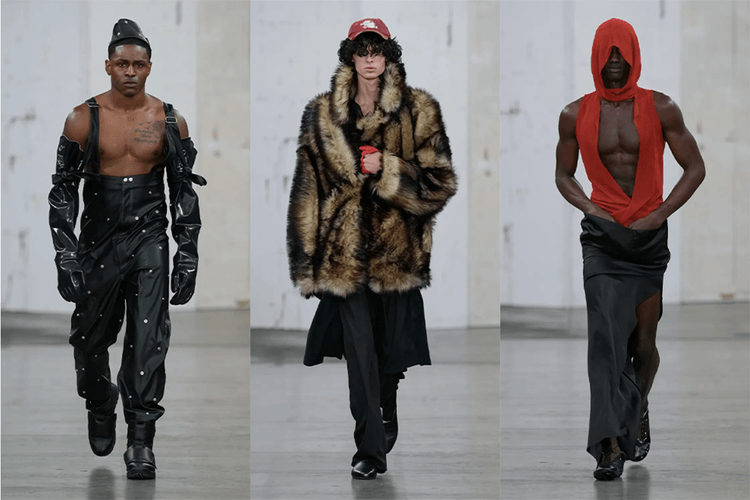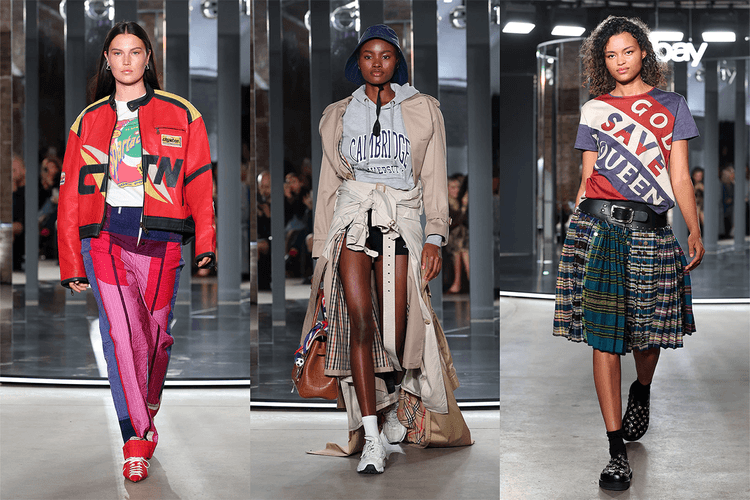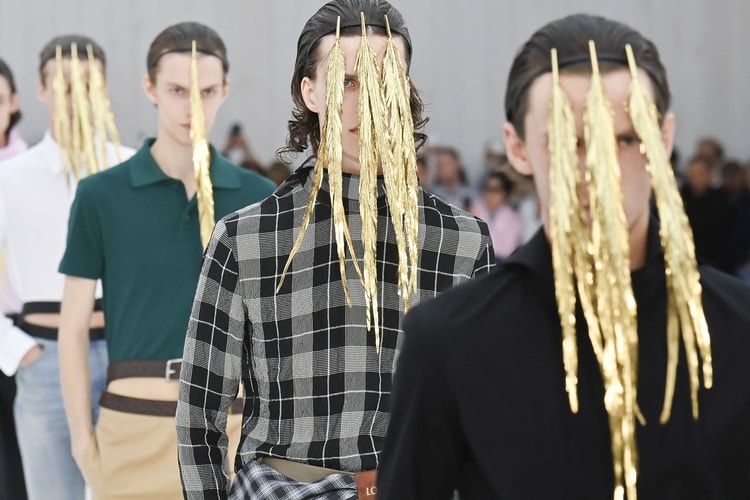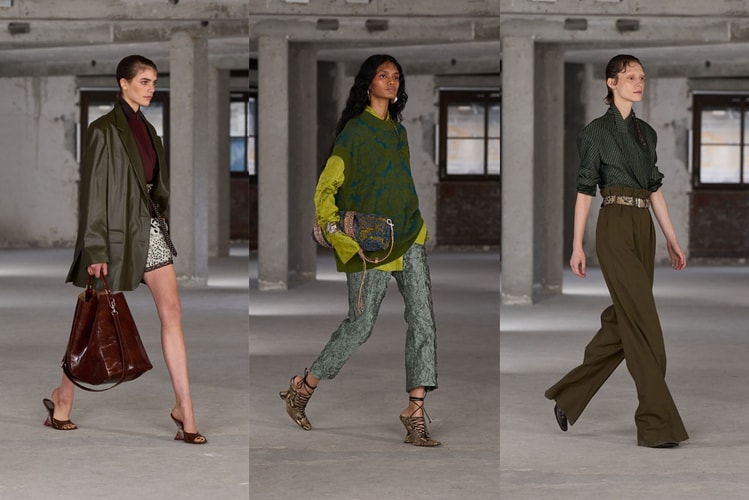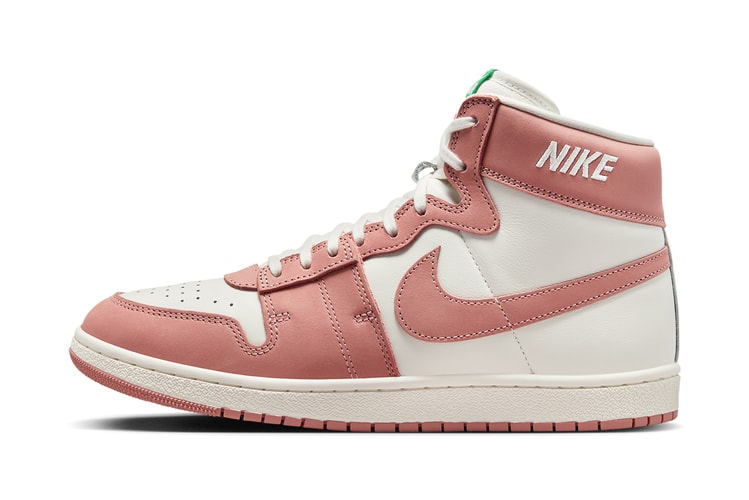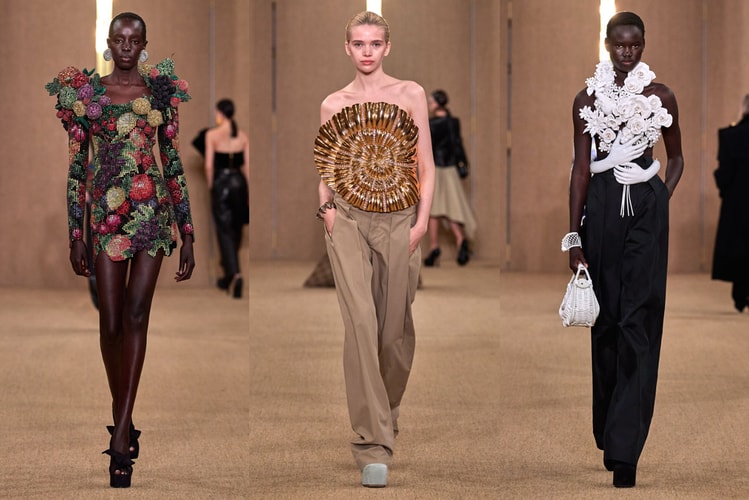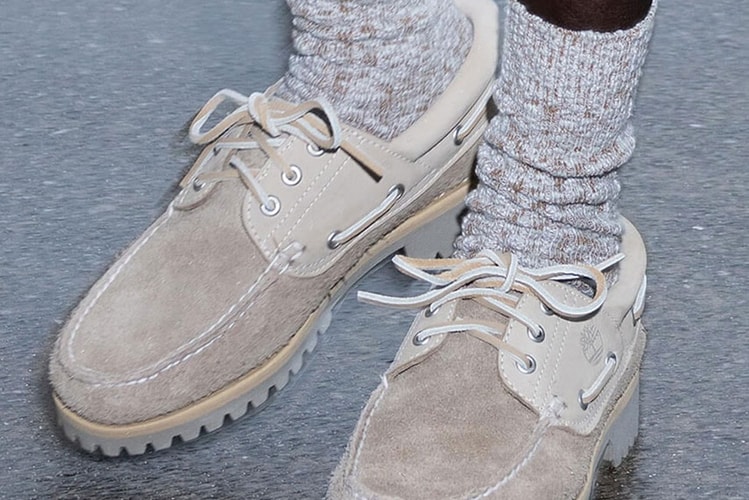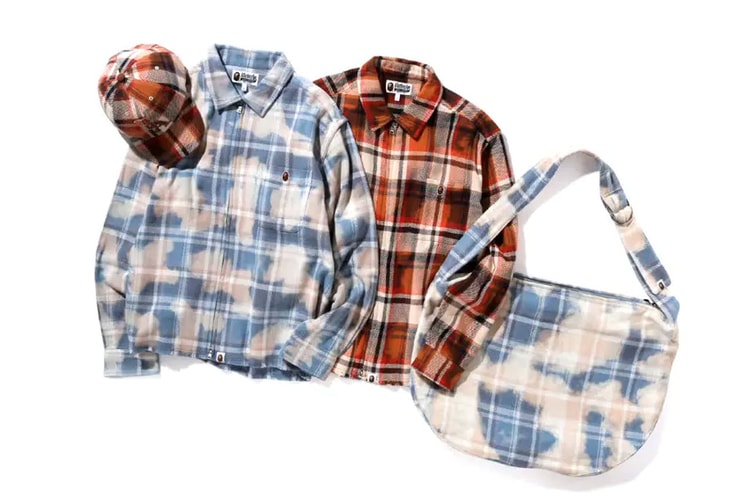Can Fashion Designers Be Successful Without Going Viral?
Some of today’s runways are built for Internet fame, while others won’t let smartphones inside the venue at all. In 2024, views can’t be the only metric that counts.

When fashion’s front row hurled rubbish at AVAVAV’s Fall/Winter 2024 runway in Milan, iPhone-gripping attendees knew they had captured viral gold. That same week, SUNNEI’s models divulged their candid mid-walk thoughts to form the show’s soundtrack: “The blonde in the second row, she thinks her review will change the world,” one said over the speakers. “I can’t wait to eat pasta,” another thought. In London, Charles Jeffrey Loverboy revealed life-like banana boots, which catalyzed chuckles across TikTok. And after Beyoncé made a last-minute trek to Brooklyn’s Bushwick neighborhood for Luar, The New York Times wrote that designer Raul Lopez had won “the attention lottery.”
Virality appears to be a prerequisite for industry success in 2024; without it, many labels, especially those emerging, find themselves trailing behind a drawn-out list of triumphant designers with digital buzz.
Must designers strive to break the Internet, or can they find the same success without harnessing the eyes of millions online?
View this post on Instagram
The Row, for one, believes the latter to be possible. During Paris Fashion Week, Mary-Kate and Ashley Olsen’s label requested that showgoers “refrain from capturing or sharing any content” during their experience. With their hands free from the clutches of smartphones, attendees instead took notes using pens and notepads gifted by the brand, fueling nostalgia for the classic fashion journalist. It was a countercultural move from the reserved fashion house, especially on the heels of a 93% increase in online searches last quarter.
“The Row is the bread and the butter of the chicest fashion,” @stylenotcom, who joked that the brand’s content ban would be “no problem” for his text-heavy coverage strategy, wrote in his book. Others, like The New York Times’ fashion director Vanessa Friedman, were not as thrilled by the show’s silence: “I would love to show you pictures of #TheRow because it was a very good show, but sadly because of their no social media policy, I can’t,” she wrote on X.
“The no-photos approach is smart for The Row because it plays into exactly who they are as a brand, but it’s not necessarily a move that [others should follow].”
The Olsen twins’ label is one of the most prominent faces of the “quiet luxury” trend (with emphasis on luxury: its popular Margaux bag boasts price tags between $3,490 USD and $6,580 USD). In a week dominated by seas of high-held iPhones, the brand’s digital “silencing” only increased the volume surrounding its hushed brand identity. Still, its anti-viral sentiment ultimately achieved the opposite. On Hypebeast’s Instagram post about the spectacle alone, more than 400 commenters are discussing the brand’s no-social-media policy.
“I think the no-photos approach is smart for The Row because it plays into exactly who they are as a brand, but I don’t necessarily think it’s a move that [others should follow],” Hunter Shires, a fashion analyst operating as @highendhomo on Instagram, told Hypebeast. Romanticizing the bygone period of pen-to-paper fashion reviews might sound appealing (and it will work for the honorable few, like The Row), but it poses difficulties for those who cannot digest a full look in five to ten seconds on paper, especially if images from the runway never end up online for the public to see.
View this post on Instagram
The no-content-allowed runway model has sparked headlines in the past. In 2010, for instance, a post-Gucci Tom Ford staged his comeback show inside his inaugural store on New York’s Madison Avenue, where he strictly banned all smartphones and photographers (aside from Terry Richardson) from attending. “I do not understand everyone’s need to see everything online the day after a show,” he told Vogue.
Bottega Veneta’s relationship with social media (or lack thereof) echoes Ford’s sentiment. In January 2021, the brand, led by Daniel Lee, famously deleted its Instagram account, which had accumulated more than 2.5 million followers. One month later, Kering CEO François-Henri Pinault explained: “Bottega has decided, in line with its positioning, to lean much more on its ambassadors and fans by giving them the material they need to talk about the brand through various social networks, by letting them speak for the brand rather than doing it itself.”
This positioning strategy indicated that Bottega Veneta was keenly aware of its prestige — to the point that it could completely eliminate itself from the competition for digital attention. The label’s recent paparazzi campaign starring Kendall Jenner and A$AP Rocky referenced the chokehold that Backgrid’s candid photography had on fashion trends in the early 2000s, with, admittedly, two viral superstars in the foreground. The unaffiliated Instagram account @newbottega, dedicated to charting the House’s sartorial escapades with curation from Laura Nycole, has skyrocketed in followers ever since the brand’s native channel disappeared. And Bottega Veneta’s runways are still readily available to view across the Internet, so fans are properly fed.
The marketing machine almost works on autopilot for a famous, profitable, legacy house. “Top brands don’t need the social media hype when the people already do it for them,” Shires said, “especially when their garments, accessories and color stories are dupe-ified all over Amazon and TikTok.”
However, the ability to forbid social media is a privilege granted only to brands, like the aforementioned, which can confidently forego homegrown viral TikToks while still reaching (and often surpassing) their financial targets, thanks to their loyal consumer bases and famous co-signers. Many brands, fighting to maintain relevance in today’s sea of burgeoning designers, often have no choice but to play the social media game.
Viral moments can be monumentally game-changing for fashion designers, if executed correctly. For instance, Bella Hadid’s spray-on Coperni dress achieved such massive online attention that it became a certified “pop culture moment,” according to Launchmetrics. The highly-watched spectacle, in which the almost-naked supermodel became the mannequin for a spray-painted, liquid fabric dress, earned a colossal media impact value, or online visibility, worth $26.3 million USD.
In another corner of the Internet, downtown New York designer Sandy Liang emerged as a feed-stopping frontrunner in the wake of “balletcore.” Videos featuring her bow-tied, dance-inspired collections earned massive exposure online: to date, #SandyLiang has earned almost 100 million views on TikTok. When she capitalized on the virtual attention with a Baggu collab last August, those mountainous likes opened countless wallets — so many, in fact, that the entire collection, along with its subsequent restocks, sold out in mere seconds.
@nextlevellexuss Girls and gays of TikTok please get to work 😭 #nycdating #tinderhorrorstories #hingedating #margielatabis #nyc#greenscreen ♬ Dance You Outta My Head – Cat Janice
Similarly, the saga of the “Tabi Swiper” on TikTok in September 2023 made Maison Margiela’s split-toe shoe the world’s hottest product in Q3 2023, thanks to a spike in searches for the product of 342%, according to the Lyst Index. The moment was (almost certainly) organic, shining a ray of hope on the power of “real” storylines amidst the acceleration of fashion’s marketing ploys.
Planned or not, there’s a fine line to be walked for viral fashion content. Over the last several years, runways have served as breeding grounds for sky-high views — but the fuel behind those lofty impressions is not always the clothes. In fact, the viral gold is typically removed from the show notes entirely. One year ago, Mandy Lee, or @oldloserinbrooklyn, offered Hypebeast a quote that still rings true today: “Gimmicks veil modern fashion. The same strategies people use to try to go viral on TikTok, fashion is using to get noticed.”
View this post on Instagram
In the case of AVAVAV or SUNNEI’s recent viral runways, there’s no denying the clever strategy behind the production. Constructed for short-form social media, these shows’ unprecedented exposure has proven pivotal for brand awareness (both labels presently reside on Instagram followings in the 300K range), but when the focus of the conversation is on the trash heap instead of the collection, what are those views really worth? To give these brands credit, there’s no saying whether their viral tactics are part of a larger plan to build a digital following first and pare back later. And how are they to prosper if no one is talking about them at all? Don’t blame the player. Blame the game.
Sometimes, though, even viral social media posts aren’t enough for brands to stay afloat. Puppets and Puppets, the New York art-meets-fashion label launched in 2019, captivated the Internet with its leather bags donning three-dimensional chocolate chip cookies, fried eggs and spiders. The brand’s runways, some decorated with sculptures of leftover dinners and others bolstered by robotic dancing cats, achieved critical acclaim. Still, in February of this year, designer Carly Mark told The New York Times buyers found her prices “too high” or her designs “too strange” for their consumers. Last summer, Mark’s financial adviser informed her that Puppets and Puppets had “about eight months of operating funds left.” She had no other option but to move her business to London and shift her focus to accessories only — viral success didn’t pay the bills.
It’s difficult but possible for newer names to earn fashion’s spotlight without seizing social media. Despite the buzz surrounding his new position at Helmut Lang, Peter Do is an exemplary designer who found massive success without leaning into online trends. He launched his brand with five friends in 2018, and while rarely showing face or giving interviews, his eponymous label’s sales tallied above $6 million USD just three months into 2022, according to Vogue Business. Excellent fashion will always speak for itself: when Do debuted his backless men’s suiting for Spring 2023, his elegant subversion of traditional formal tailoring earned the gaze of the Internet, with no fuss required.
Social media views are undeniably crucial to modern-day prosperity in fashion, but it’s the focus of those eyes that determines their value. “The hyperviral show has played itself out,” said Shires. “When the gimmick overpowers the clothes, it fails.”
Virality, good or bad, increases consumer consciousness (all press is good press, after all), and perhaps impressions-seeking show formats can build fruitful worlds for brands with eccentric identities. But, ultimately, the quality of the attention outweighs the quantity, and the true metric for success will always be what sells.






